Input interpretation

chlorine monoxide
Chemical names and formulas
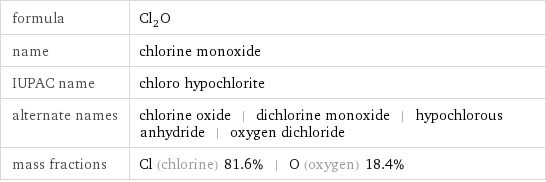
formula | Cl_2O name | chlorine monoxide IUPAC name | chloro hypochlorite alternate names | chlorine oxide | dichlorine monoxide | hypochlorous anhydride | oxygen dichloride mass fractions | Cl (chlorine) 81.6% | O (oxygen) 18.4%
Lewis structure
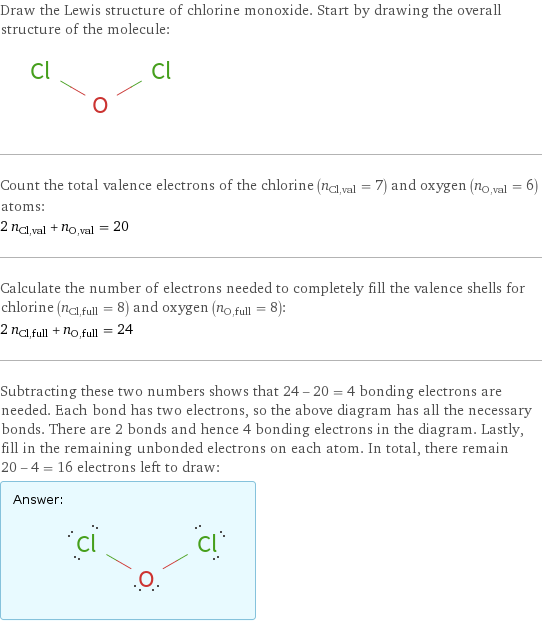
Draw the Lewis structure of chlorine monoxide. Start by drawing the overall structure of the molecule: Count the total valence electrons of the chlorine (n_Cl, val = 7) and oxygen (n_O, val = 6) atoms: 2 n_Cl, val + n_O, val = 20 Calculate the number of electrons needed to completely fill the valence shells for chlorine (n_Cl, full = 8) and oxygen (n_O, full = 8): 2 n_Cl, full + n_O, full = 24 Subtracting these two numbers shows that 24 - 20 = 4 bonding electrons are needed. Each bond has two electrons, so the above diagram has all the necessary bonds. There are 2 bonds and hence 4 bonding electrons in the diagram. Lastly, fill in the remaining unbonded electrons on each atom. In total, there remain 20 - 4 = 16 electrons left to draw: Answer: | |
3D structure

3D structure
Basic properties
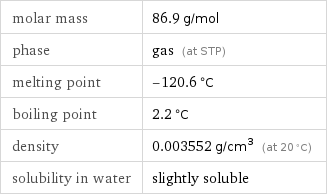
molar mass | 86.9 g/mol phase | gas (at STP) melting point | -120.6 °C boiling point | 2.2 °C density | 0.003552 g/cm^3 (at 20 °C) solubility in water | slightly soluble
Units

Gas properties (at STP)

density | 0.003552 g/cm^3 (at 20 °C) molar volume | 24460 cm^3/mol
Units

Thermodynamic properties
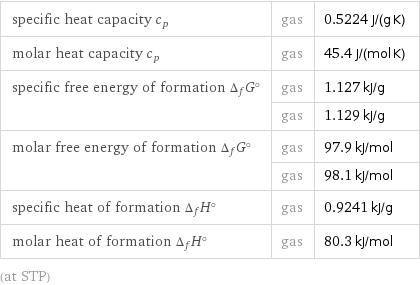
specific heat capacity c_p | gas | 0.5224 J/(g K) molar heat capacity c_p | gas | 45.4 J/(mol K) specific free energy of formation Δ_fG° | gas | 1.127 kJ/g | gas | 1.129 kJ/g molar free energy of formation Δ_fG° | gas | 97.9 kJ/mol | gas | 98.1 kJ/mol specific heat of formation Δ_fH° | gas | 0.9241 kJ/g molar heat of formation Δ_fH° | gas | 80.3 kJ/mol (at STP)
Chemical identifiers
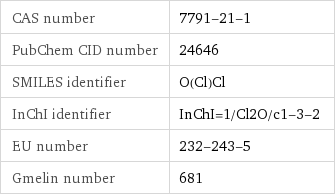
CAS number | 7791-21-1 PubChem CID number | 24646 SMILES identifier | O(Cl)Cl InChI identifier | InChI=1/Cl2O/c1-3-2 EU number | 232-243-5 Gmelin number | 681
NFPA label

NFPA label
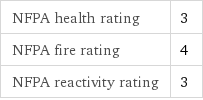
NFPA health rating | 3 NFPA fire rating | 4 NFPA reactivity rating | 3